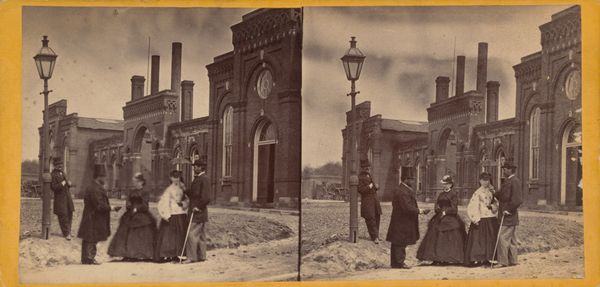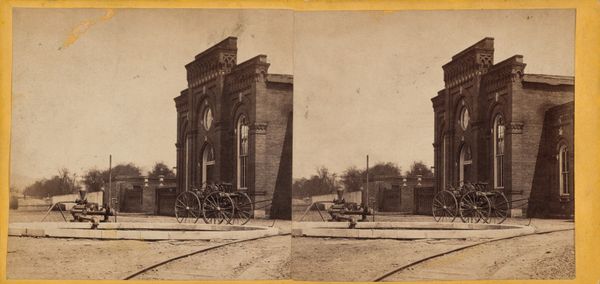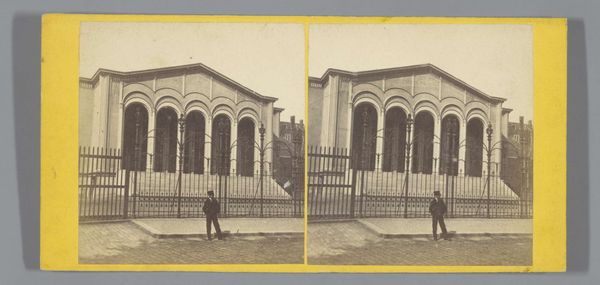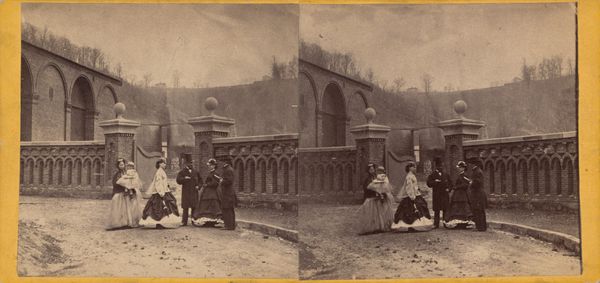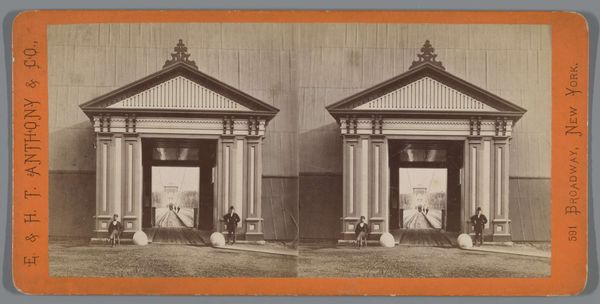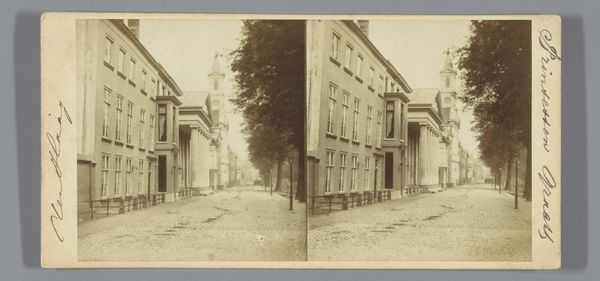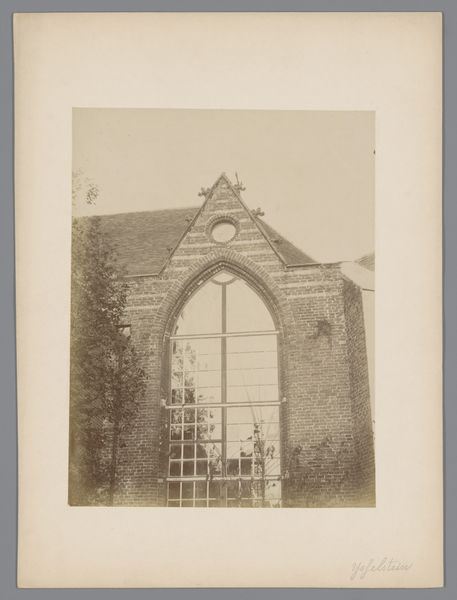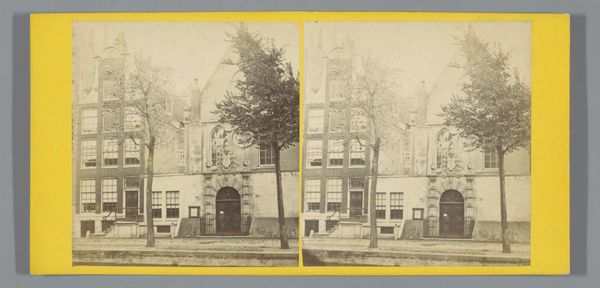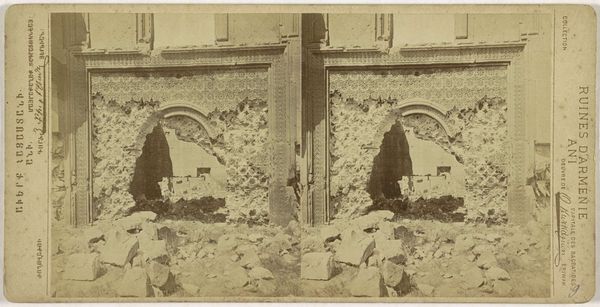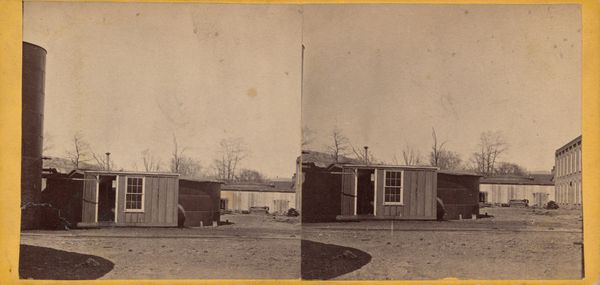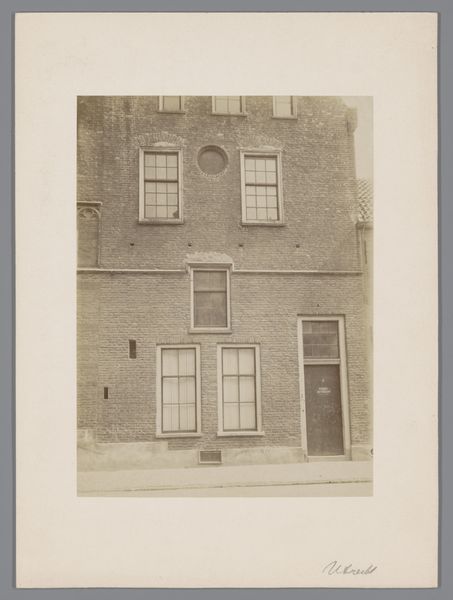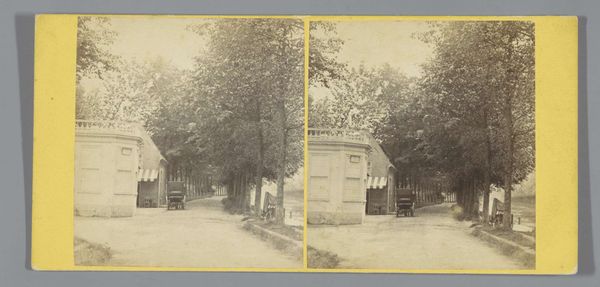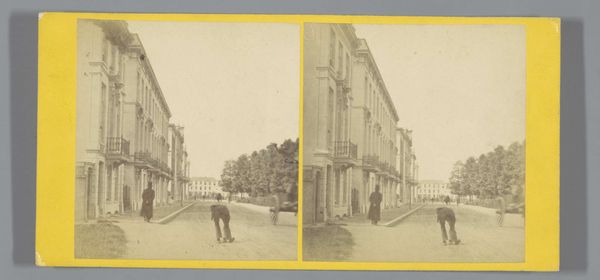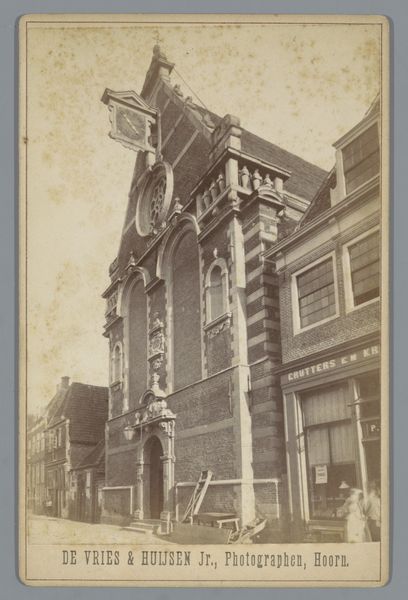
photography, albumen-print
#
portrait
#
photography
#
cityscape
#
albumen-print
#
realism
Dimensions: image/sheet: 7.8 × 7.9 cm (3 1/16 × 3 1/8 in.) image/sheet: 7.8 × 7.9 cm (3 1/16 × 3 1/8 in.) mount: 8 × 17.1 cm (3 1/8 × 6 3/4 in.)
Copyright: National Gallery of Art: CC0 1.0
Curator: This haunting image is "Standard Petroleum Refinery, Pittsburg, Pennsylvania," captured around 1865. It's an albumen print, likely a stereograph. There’s a palpable sense of both progress and ominous quiet. Editor: Yes, the somber tonality contributes to that feeling. There's a stark stillness despite the suggestion of movement with those three figures gathered outside. You see these fashionable women and the man, but they're almost ghostly amidst that imposing brick building. It feels burdened. Curator: The socio-political context of the time is key. Pittsburg, newly industrialized with natural resources, witnessed the rise of figures like Rockefeller. It represented booming enterprise intertwined with profound exploitation. Editor: Exactly! And this photograph functions almost as propaganda, presenting a façade of normalcy or even gentility in the face of resource extraction and likely, worker exploitation within that Standard Petroleum Refinery. Look how it dominates the space. The gothic-like architecture almost sanctifies the industry, doesn't it? Curator: It speaks volumes about visual strategies used to legitimize industries that may have actually perpetrated grave social and environmental damage. Photography had become integral to crafting perceptions of reality. Who is taking the photograph and for whom? I mean who exactly is the intended audience for these types of portraits? Editor: Right! The photograph isn’t simply reflecting a neutral reality but actively shaping narratives about industrial expansion and success. We must think about the cultural and economic imperatives underlying this image production, the social layers this seemingly harmless "snapshot" truly reveals, right down to those womens’ dresses and parasols that belie the reality for the worker behind the wall of brick and the smoke beyond. Curator: Reflecting on that intersection is crucial to unearthing the hidden power dynamics operating in plain sight. It goes beyond art aesthetics to highlight how power operates and shapes perception. Editor: Absolutely. These images tell a carefully crafted tale and, with a deeper investigation, we can unearth so much. This picture is not really worth a thousand words, it's worth several volumes.
Comments
No comments
Be the first to comment and join the conversation on the ultimate creative platform.
